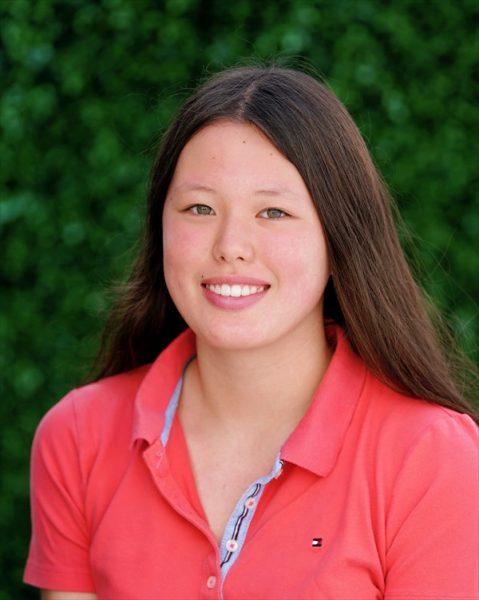Faculty, staff promote safety
Following pick-up, drop-off policies aids neighborhood
Senior Dena Silver crosses the intersection of Broadway and Webster streets with the help of a crossing guard. Traffic commissioners work during drop-off and pick-up to ensure safety.
October 3, 2019
As students and faculty cross the street to the Broadway Campus, traffic commissioners direct cars, manage crosswalks, prevent cars from going in neighborhood driveways and creating traffic safety hazards.
Traffic commissioners are faculty, staff and administrators in green vests who direct traffic and enforce drop-off rules for the 41% of faculty and high school students who get dropped off in a car.
“Traffic commissioners are the folks who try to help kids get out of their car and get their things together as quickly as possible,” Community Life Chair Michael Buckley said. “They are also around the neighborhood making sure that our families are not parking in people’s driveways or in the middle of the street or things that would cause traffic problems.”
Neighbors of the school’s campuses have had to deal with cars pulling into their driveways or disrupting traffic so that students can get dropped off, but with stricter rules and stationed traffic commissioners, traffic has been limited.
“I imagine myself leaving the house in the morning and trying to get to work on time,” Human Resource Director Juli Devincenzi said. “If I was trying to get out of my driveway and there was a car blocking me, I think that’s really disrespectful.”
The campus’ accessible location allows some students and faculty to walk or take public transportation, which brings fewer cars to the neighborhood. Almost 26% of Convent students use public transportation to get to school in the morning, and 19.8% say they take it five days a week, according to a Broadview survey. Walking is also popular for students who live closer to school, with 11.6% responding they usually walk to school.
“I live about five blocks away from Convent so when I have my first period at Convent, I walk, and when I have my first period at Stuart Hall, I take the 1 [California bus] to Octavia,” sophomore Sloane Riley said. “I like walking better because it’s really relaxing for me and I get some exercise in the morning.”
For students who don’t live close enough to walk or don’t have accessible bus routes, ride sharing programs such as Uber and Lyft are popular forms of drop off. Students under the age of 18 are not permitted to request a ride or have their own Uber or Lyft account, according to the companies’ terms of use.
“I take the ferry to downtown San Francisco, and then I take either Uber or the bus to school,” sophomore Mia Sassi, who lives in Point Richmond, said. “When I’m in an Uber, I usually have to get dropped off around Gino’s right outside of the boundary set by the school.”
In an effort to reduce traffic and deal with the multitude of ride-sharing vehicles who don’t know the school drop-off policies, the school has created a boundary — outside of Green Street, Laguna Street, Jackson Street and Steiner Street — where riders can be picked up or dropped off.
“We have made commitments to our neighbors to try and reduce traffic in the neighborhood,” Buckley said. “About a thousand students go to school here, and we’re just trying to be considerate to the needs of our neighbors as we can be.”










